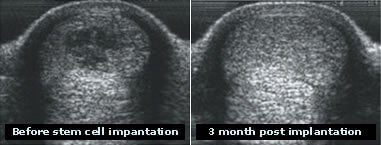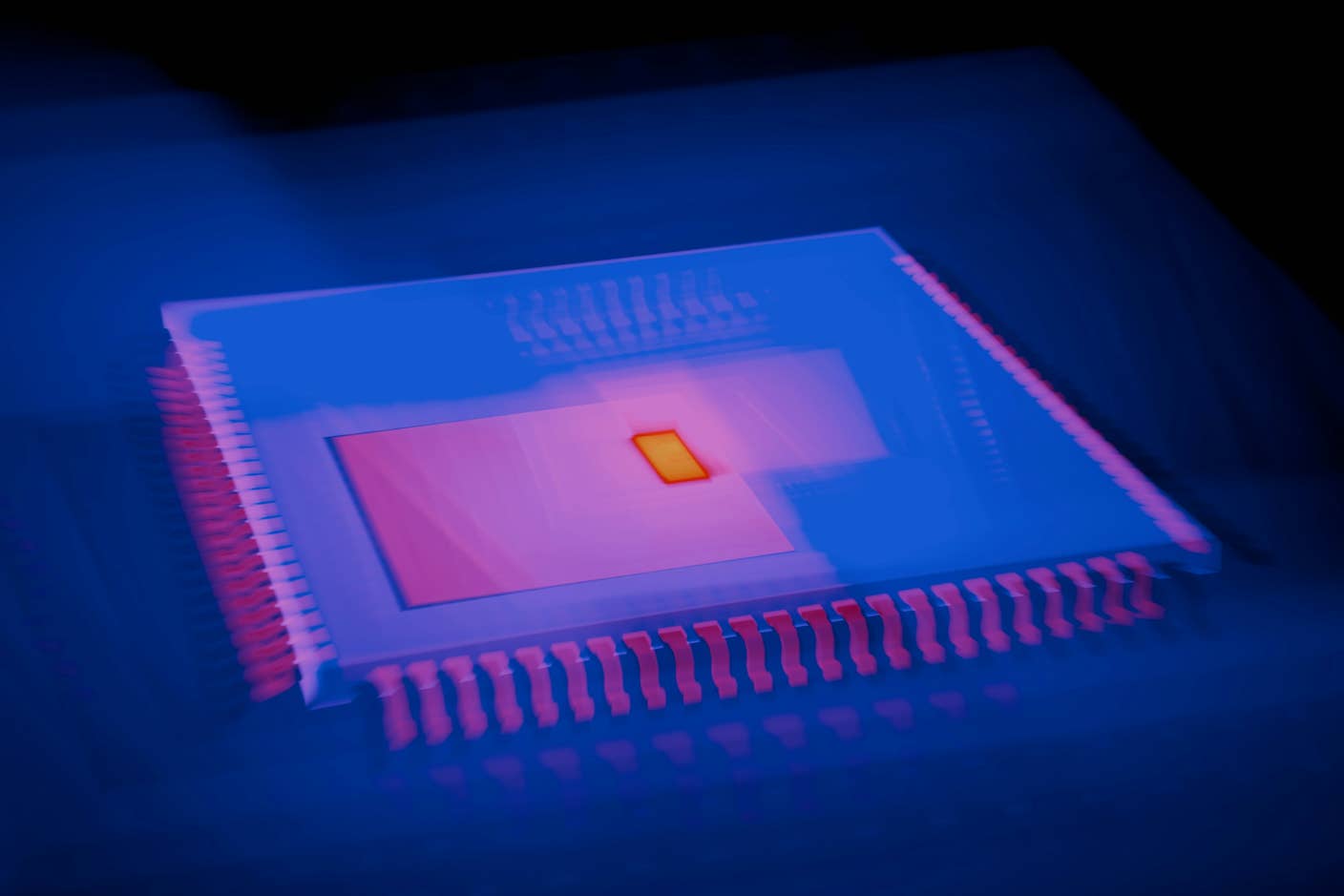Why Your Dog Is Getting Better Stem Cell Treatment Than You

Share
If you like controversy there's nothing that will bring you more joy than yelling "stem cell research" in a mixed crowd and then sadistically sneaking out of the room. The debate over the use of the extremely potent little cells has led to massive regulation in all realms of stem cell transplants in the United States. That's why stem cell research for diabetes has been centered in Brazil, and why your dog or horse can receive the newest stem cell treatments now, while you're likely to have to wait years or decades.

C'mon girl, help me get a stem cell treatment!
What are these treatments promising? According to anecdotes, the results are amazing. Old dogs with bad hips frolic like puppies. Race horses with injuries come back to become world class winners. One such racehorse, Be A Bono, won 16 out of 24 starts, earned more than 1.3 million in prize money, and was the 2004 World Champion Quarterhorse. All after a stem cell treatment. The success stories with dogs are equally remarkable, if a little tinted by emotion; check out the video from Vet-Stem after the break.
Most animals that have been treated with stem cells suffer from joint ailments. Damage to cartilage, tendons, ligaments, or arthritic inflammation top the list. Stem cells are seen as a way to provide almost magical regenerative healing to combat these ailments. The process is actually pretty simple. Rather than embryonic stem cells, adult stem cells are used. These adult stem cells are harvested in a veterinary office from fat cells in the animal, and then sent to a lab. Processing separates out the stem cells from other cells, and a concentrated dose is sent back to the vet (The turn around time for processing is only a day). The adult cells are then injected into the animal in the area that needs regeneration.
Regulation does not necessarily stop research, but it tends to slow it down as it navigates bureaucracy. That's where the helpful word "autologous" comes into play. An autologous transplant is one where the donor and the patient are the same organism: like a fat transplant from your buttocks to your lips, or like the horse and dog treatments we just discussed. Autologous transplants of stem cells in animals are not regulated by the federal government and this has led two competing companies, Vet-Stem and Vet-Cell, to specialize in providing veterinarians with stem cells for their equine and canine patients.
From the Horse's Mouth
The anecdotal results may be hyperbolic, but the clinical numbers are no less noteworthy. In clinical trials by Vet-Stem, 66 horses were treated and 77% saw marked improvement and a return to racing. Vet-Cell's trials used 82 horses and had a success rate of 78%. Critics are quick to point out that company run experiments are a far cry from double-blind clinical trials, but both companies have treated thousands of horses and are making huge strides into the small animal market (read here: dogs).

Equine results from the Vet-Cell website.
Of the 1500 veterinarians that Vet-Stem has trained to perform autologous stem cell transplants, more than 60% specialize in small animals. That means that most of the transplants have moved from equine athletes to canine companions. With a price tag less than $3000, the stem cell treatment is actually cheaper than many hip replacements surgeries for larger dogs (as much as $10k or so). As Vet-Stem and Vet-Cell promote the efficacy of the treatment, you can expect more and more dog owners to be stepping up and demanding it for their pets. Considering the attachment between pet and owner, it's an easy sell.
Be Part of the Future
Sign up to receive top stories about groundbreaking technologies and visionary thinkers from SingularityHub.


The harder sell would be to convince academia to validate the clinical findings...or so you would think. But of the four U.S universities that have veterinary stem cell projects (UC Davis, Colorado State University, U Penn, and Cornell) all have expressed cautious optimism about the success of treatments on their test subjects. CSU treated 15 race horses and saw 10 return to active competition. Not quite the 78% success rate of Vet-Cell, but still impressive. The UC Davis Regenerative Medical Laboratory is expanding to accommodate more work in the area as well.
Which isn't to say that anybody really knows how these autologous stem cell treatments actually work. There's a large debate between scientists whether the stem cells are actively reassigning to become mature cells of different types (bone, ligament, etc) or whether their presence promotes healing by releasing cytokines (cell to cell communication chemicals). There's even argument over which kind of adult stem cells to use. Vet-stem favors fat cells, while most of the universities favor bone marrow cells. Fat cells are more plentiful, but perhaps less potent. Marrow cells are more potent, but have to be cultured to provide enough for treatment. Definitive answers to these debates may take years to resolve, but that hasn't stopped animals from being treated today.
It Really Gets My Goat
The first equine autologous procedure was performed around 1995 by Douglas Herthel DVM. He was reporting regular success by 2001. Be A Bono was treated and then became a champion in 2004. It's now half way through 2009 and Vet-Stem and Vet-Cell are going strong. They train new veterinarians every year in the procedure and they can process dozens of sample each week. This is amazing technology, which still needs more testing, but right now is one of the more miraculous cures in veterinary medicine. Similar treatments for humans don't exist yet. So your horse or dog can benefit, but you can't.
There's a lot of really great reasons why this is so. Human test subjects are not animal test subjects, and clinical trials for humans have to be more rigorous and take longer. Collecting and isolating adult stem cells in humans still needs more time to be perfected. This technology is largely focused on joint ailments, which are important for humans, but not life threatening as they are for horses and dogs.
There are also a lot of stupid reasons why autologous transplants are years behind in humans, mainly bureaucracy, debate, and fear. I can't help but look at these veterinary treatments and feel disappointed and angry that similar treatments are not available for humans in the U.S. Perhaps that's an ignorant reaction. Look at the progress being made in the animal trial stages for organ replacement, or even the madcap use of stem cells in other countries, however, and you get the feeling that caution in the United States is stifling our development.
Still, progress is being made. The British parent company of Vet-Cell is starting Med-Cell, and hopes to bring the autologous treatment to humans suffering from problems in the achilles tendon. The National Institute of Health is funding programs that will focus on bone marrow stem cell treatments for arthritis, and musculoskeletal and skin diseases. ABC news Nightline recently did a report on the veterinary treatments that raised awareness and sparked a lively debate on stem cells once again.
Most of the controversy on stem cells seemed to stem from the use of embryonic cells. George W. Bush banned such research in 2001, Barack Obama opened the research again in 2009 both with great hullabaloo. The use of embryonic stem cells, however, is just one option. Adult stem cells are also viable for treating illnesses as autologous veterinarian joint treatments show. As the success of stem cell treatments continue, I hope that the bureaucracy works to adapt (or minimize) regulation so that it can promote research while still maintaining the safety of the public. That public is clamoring for better, faster, and cheaper treatments that stem cells could provide. Throw us a frikin' bone here.
Related Articles

This Light-Powered AI Chip Is 100x Faster Than a Top Nvidia GPU

This Week’s Awesome Tech Stories From Around the Web (Through December 20)

Data Centers in Space: Will 2027 Really Be the Year AI Goes to Orbit?
What we’re reading